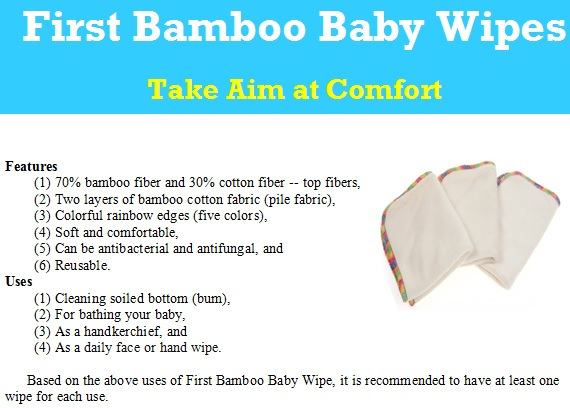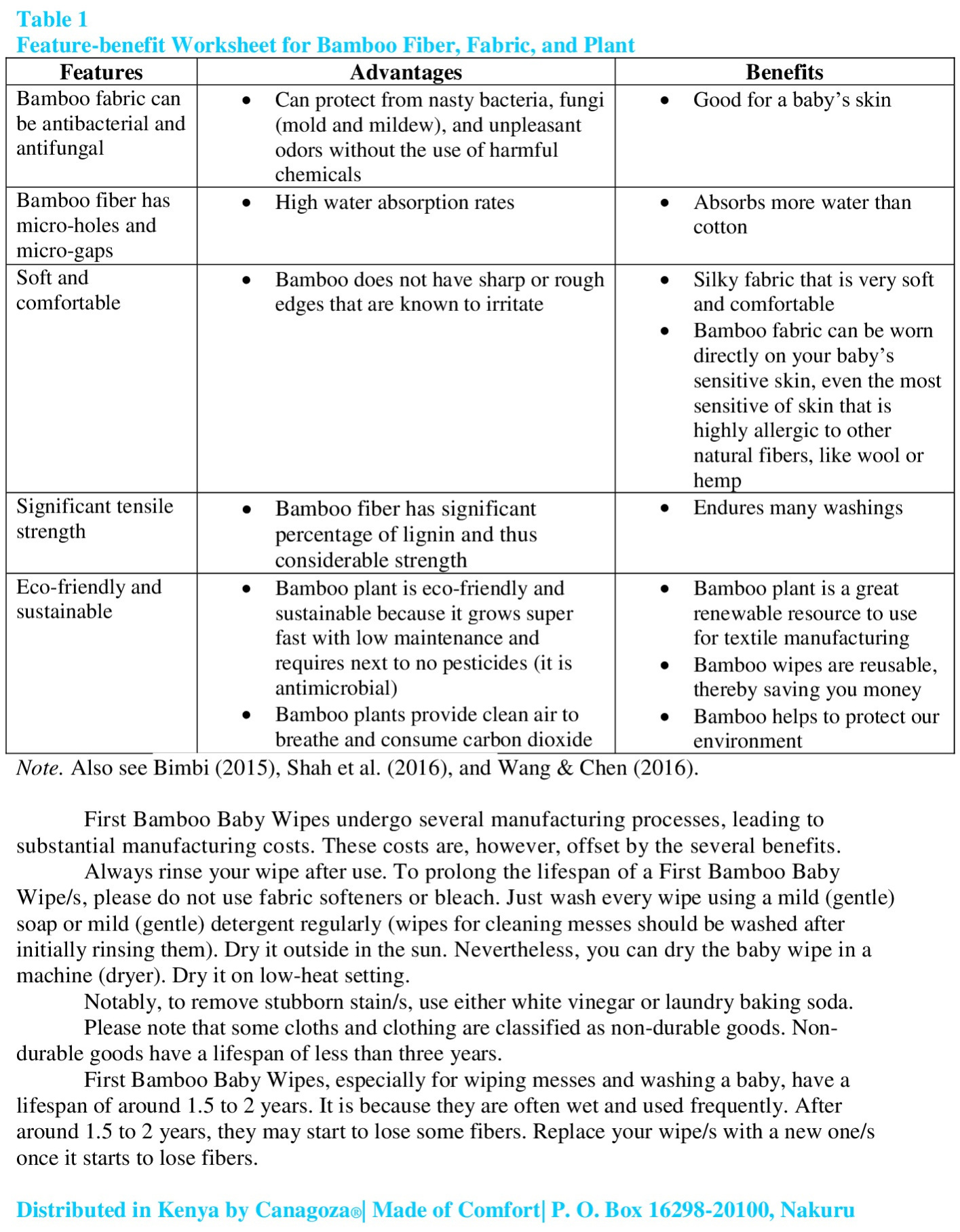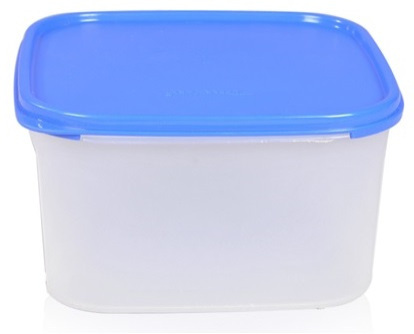


Comprehensive Facts: Bamboo Fiber, Fabric, and Baby Wipes
From soiled bottoms to messy hands, the main reason moms use baby wipes is the ability of the wipes to cleanup messes quickly, conveniently, and gently. Washable or reusable baby wipes are brilliant. They really cleanup the mess (Nappy Lady, 2015).
First Bamboo Reusable Baby Wipes from Canagoza are made of two layers of soft bamboo cotton fabric. Bamboo can be antibacterial and antifungal fabric. As such, bamboo baby wipes are good for babies’ skin.
Unlike cotton plant, the bamboo plant has an antimicrobial bio-agent called bamboo kun. Bamboo kun can be found in bamboo clothing. Bamboo kun can thus protect from nasty bacteria, fungi, and unpleasant odors without the use of harmful chemicals (Bimbi, 2015).
Bamboo absorbs water better than cotton. The reason is that bamboo fiber has many micro-holes and micro-gaps (Bimbi, 2015).
If you have ever touched a bamboo baby blanket or clothing, you will know why so many parents love it so much. The lightweight, silky soft fabric is comfortable.
Bamboo is often described as feeling like cashmere. Here is why it is so touchable: the fiber of the bamboo is naturally round and smooth edged.
Bamboo fabric does not have sharp or rough edges that are known to irritate. Bamboo fabric can, therefore, be worn directly on your baby’s sensitive skin, even the most sensitive of skin that is highly allergic to other natural fibers, like wool or hemp (Bimbi, 2015; Wang & Chen, 2016).
Bamboo fiber has a significant percentage of lignin and thus considerable strength (Shah, Sultan, Jawaid, Cardona, & Talib, 2016).
Bamboo is often blended with cotton (in the ratio of 70% bamboo to 30% cotton) to give the fabric a little more structure (Bimbi, 2015; Wang & Chen, 2016).
Unlike the majority of other available resources, including disposable baby wet wipes, bamboo plant is highly eco-friendly with the way it grows as well as its sustainability. Bamboo grows super fast with less energy and low maintenance, and it requires next to no pesticides. Bamboo is, therefore, a great renewable resource to use for textile manufacturing (Bimbi, 2015).
Bamboo plants provide clean air to breathe and consume carbon dioxide. Bamboo forests are highly dense. As a result, the bamboo forests return 30% more oxygen to the atmosphere than trees do (Bimbi, 2015).
Bamboo fabric products are 100% biodegradable. For this reason, they are safe for a county’s disposable programs, including landfill (Bimbi, 2015).
Why would I want to use First Bamboo Baby Wipes?
When your baby is born, hospitals recommend you use plain, lukewarm water to wipe your baby's skin, because disposable baby wet wipes can be harsh on tender new skin. If your baby has eczema, cradle cap, or a rash, disposable baby wet wipes can actually make the skin more irritated (Cotton Babies, 2015; Navsaria, 2019).
First Bamboo Baby Wipes help manage messes. Whether it is changing time or play time, more moms worldwide are choosing reusable bamboo baby wipes. These wipes are thick enough to help you swipe away any mess, while, at the same time, being gentle on your baby’s skin (Cotton Babies, 2015; Navsaria, 2019).
Further advantages and benefits of First Bamboo Baby Wipes are:
(i) Bamboo baby wipes are highly soft;
(ii) Bamboo is healthy for your baby;
(iii) Bamboo baby wipes are great for sensitive skin and newborns;
(iv) Bamboo baby cloth wipes are reusable many times. You will find that you use far fewer wipes, as a result;
(v) Bamboo baby wipes enables you to cut down on landfill waste because they are reusable;
(vi) Cloth wipes are the sensible and cost-effective (enables you to save money) alternative to disposable wet wipes; and
(vii) Can be naturally antibacterial and antifungal and thus good for a baby's skin (Cotton Babies, 2015).
How to use Cloth Wipes
There are two ways to use cloth wipes:
(I) Dry Method
To use the dry method, you will put your wipe solution (or water) in a small spray bottle. When needed, spray your baby's bottom and use a dry First Bamboo Baby Wipe to wipe clean (Cotton Babies, 2015).
(II) Wet Method
To use the wet method, you will have to store the washable wipes in a tupperware box (pictured below) so they are wet and ready to go. After using the wipe/s, you can put it in a wet bag or wet/dry bag.
Then, your can wash the wipe/s alone or alongside cloth diapers.
There is no need to dry the wipe/s when it comes out of the wash. Just put it back in the tupperware box and add some more water to make it damp, and it is ready again. The wipes in the tupperware box will not go stale or stagnant, as you will go through them too quickly (Nappy Lady, 2015).
A second wet method is to make your own wipe solution in a small bowl, put your wipes into the bowl, and store them in a wipe warmer. This ensures you will always have warm wipes ready for the next diaper change (Cotton Babies, 2015).
Tupperware Box

How an Australian Mother used to make her own Baby Wipe Solution
It is really easy to make your own wet baby wipes at home, explains Vanessa Layton. You will save money. You know exactly what is going onto your baby’s bum.
You will be saving the environment all at the same time, Layton further notes. When she used disposable wipes, she found she needed more disposables than reusable ones to clean her babies.
Here is how she used to prepare her wet wipes:
I have a big glass bowl, and I always put the next day’s wipes into the bowl (usually about 15-20 wipes) and poured a kettle of boiling water over the top. Then, I added a drop of tea tree oil and a drop of lavender oil to the water. Then, I mixed it around a bit and allowed the wipes to cool. The boiling water kills any leftover bacteria not killed by the sun. The tea tree oil adds some natural antibacterial protection, while the lavender gives a bit of soothe. Once the wipes cooled, I pressed them out, put them into a plastic container with a lid [like the tupperware box pictured above], and placed them on the change table. I always had a wet bag to put any dirty wipes in. I found this method really straightforward. I did it for years with my boys (Layton, 2012).
Layton also embraced dry wipes option:
You make up a spray solution and spray it directly onto the wipes when you are ready to use them. There are loads of recipes for the spray solution, but here is a really easy one:
(i) One (1) tablespoon of Dr. Bronner’s [Baby Unscented] Pure-Castile Liquid Soap (Ro, 2019)
(ii) Three cups of water
Mix it up and pop it into a spray bottle. You will need to do this every week to make sure the spray does not go off. I have also seen another version of this in which the water is replaced with three cups of chamomile tea (chamomile is a traditional remedy for nappy rash) (Layton, 2012).
Washing First Bamboo Baby Wipes
After using cloth wipes for cleaning messes and washing your baby, please rinse them. After rinsing wipes for cleaning messes, you can initially put them in PeeGuard Wet/Dry Bag, PeeGuard Wet Bag, or put them in the wash.
You can wash the wipe/s alongside your BoyGirl Dry Diapers (Cheeky Wipes, 2015). Wash every wipe using a mild (gentle) detergent or mild (gentle) soap regularly (wipes for cleaning messes should be washed after initially rinsing them). Please do not use fabric softeners or bleach.
Dry it outside in the sun. Nevertheless, you can dry the baby wipe in a machine/drier. Dry it on low-heat setting.
Please note that some cloths and clothing are classified as non-durable goods. Other non-durable goods include food, some cleaning products, cosmetics, and among others. Non-durable goods have a lifespan of less than three years.
First Bamboo Baby Wipes, especially for wiping messes and washing a baby, have a lifespan of around one point five (1.5) to two (2) years. It is because they are often wet and used frequently. After 1.5 to 2 years, they may start to lose some fibers. Replace the wipes with new ones once they start to lose fibers.
Removing Soap Residue and Stubborn Stain/s
If the wipe/s for bathing your baby is coated with soap after rinsing/washing, hold it using one of your hands. Place your thumb and index finger of the other hand on the wipe (the wipe is now at the center).
Gently apply pressure on the wipe. Move the thumb and index finger downward to remove the soap.
Removing Stubborn Stain/s
Add some warm water in a basin. Add white vinegar (as per manufacturer’s instructions). Place the wipe/s. Allow the wipe to soak for some time (perhaps overnight).
Next, wash it in plain water (no detergent, no fabric softener/conditioner...). Rinse thoroughly and dry, or just use it when wet for bathing (Abgarian, 2020; “Everything you need to know about washing baby clothes,” 2020; Khan, 2020; Leverette, 2021a; “White vs. distilled vinegar,” n.d.).
Alternatively, to remove stubborn stain/s, dissolve some laundry baking soda in some warm water. Add some cool water in a basin (or other container). Add the dissolved baking soda. Next, place the wipe.
Allow the wipe to soak for a significant timeframe (probably overnight). Next, wash it in plain water (no detergent, no fabric softener/conditioner...). Rinse thoroughly and dry, or just use it when wet (Arm & Hammer, 2019; Leverette, 2021b).
Can I use Baking Soda and White Vinegar Together?
No, when used together, baking soda and white vinegar will neutralize one another (Tide, 2020).
Mild (Gentle) Soaps Description
Some soaps are not “true” soaps. True soap is a combination of natural fats and an alkali (lye). Lye is also known as sodium hydroxide (Higuera, 2019). Sodium hydroxide is a chemical that comes from salt.
Today, however, most ordinary or traditional soaps do not contain lye or natural fat. These traditional soaps are actually synthetic detergents or cleansers. They can contain fragrance, sodium lauryl sulfate, and other ingredients that are harsh to your skin (Higuera, 2019). The average pH level in traditional soap is 9 to 10. However, your skin’s normal pH level is usually 4.5 to 6.5 (Siddons, 2019).
Traditional soaps can alter the pH balance (acidity level) of your skin by increasing skin pH (Siddons, 2019). The alkaline pH of the traditional soaps can elevate skin pH above 8.0 and destroy the skin lipid layer (Mendes et al., 2016). It can lead to skin dryness, acne itching, and irritation.
By contrast, mild (gentle) soap does not affect the pH of your skin (Higuera, 2019; Siddons, 2019).
References
Please click on (or tap on) the following link to access/view the "References": References -- First Bamboo Baby Wipes.doc